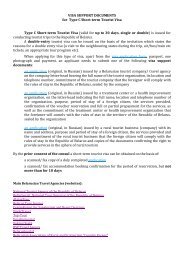FIGURE 4.4Different environmental scenarios have different impacts on extreme povertySub-Saharan AfricaSouth AsiaPopulation in extreme poverty (millions)1,2001,000800EnvironmentaldisasterscenarioPopulation in extreme poverty (millions)1,2001,000800Environmentaldisasterscenario6006004004002000Base casescenario2000Base casescenario2010202020302040205020102020203020402050Note: Extreme poverty is defined as $1.25 a day in purchasing power parity terms. See Technical appendix for a discussion of the base case and fast track scenarios.Source: HDRO calculations based on Pardee Center for International Futures (<strong>2013</strong>).TABLE 4.3Population in extreme poverty under the environmental disaster scenario, by region, 2010–2050 (millions)DifferenceRegion 2010 2020 2030 2040 2050Increase,2010–2050Frombase casescenario, 2050Fromacceleratedprogressscenario, 2050Arab States 25 25 39 73 145 120 128 144East Asia and the Pacific 211 142 211 363 530 319 501 522Europe and Central Asia 14 6 17 32 45 30 41 44Latin America and the Caribbean 34 50 90 138 167 134 135 155South Asia 557 530 738 978 1,207 650 1,126 1,194Sub-Saharan Africa 371 377 496 709 1,055 685 788 995World 1,212 1,129 1,592 2,293 3,150 1,938 2,720 3,054Note: Extreme poverty is defined as $1.25 a day in purchasing power parity terms. See Technical appendix for a discussion of the base case and fast track scenarios.Source: HDRO calculations based on Pardee Center for International Futures (<strong>2013</strong>).age structure can have considerable effects oneconomic growth. 36 Over 1970–2010, the dependencyratio (the ratio of younger and olderpeople to the working-age population ages 15–64) declined sharply in most regions—mostdramatically in East Asia and the Pacific, whereit dropped 39.5%, followed by Latin Americaand the Caribbean and the Arab States, whereit fell 34%.Over 2010–2050, however, dependency ratiosare likely to rise in medium, high and veryhigh HDI countries, particularly in developedcountries and in East Asia and the Pacific. Inpoorer regions, such as South Asia and Sub-Saharan Africa, dependency ratios will continueto fall, but more slowly.Changing demography will profoundly affectmost countries in the South in coming decades,96 | HUMAN DEVELOPMENT REPORT <strong>2013</strong>
ut in very different ways. Some poorer countrieswill benefit from a demographic dividendas the share of the population in the workforcerises. 37 Richer regions of the South, however,will confront the challenge of rising dependencyratios, with ageing populations and fullschool enrolment mirrored by a decline in thenumber of people earning incomes.In the long term, both demographic challengescan be mitigated by raising educationalachievement. First, education acceleratesreductions in fertility rates where they arestill high. Second, education can boost labourproductivity in richer countries with smallerworkforces. At the same time, governmentswill need to foster job creation more actively toexpand opportunities for productive employmentfor younger and older workers alike.The failure of economic opportunity andproductivity to keep pace with these demographicchanges can not only keep countriesfrom benefiting from the demographic dividend,it can also threaten social stability, asseen in many countries in recent years.Modelling demographyand educationDemographic trends are not deterministic,however. They can be influenced, at least indirectly,by education policies and sometimes bymigration policies. 38 Effective policy optionscan be identified by modelling demographicand education trends. 39 Two scenarios for2010–2050 illustrate the impact of differentpolicy responses: the base case scenario, inwhich enrolment ratios remain constant ateach level of education, and a fast track scenario,in which countries with the lowest initialeducation levels embrace ambitious educationtargets. 40The dependency ratio is an increasinglycritical concern. A high dependency ratio canimpoverish a country and lead to reversals inhuman development. The base case scenarioprojects a 9.7 percentage point decline in thedependency ratio over 2010–2050 for lowHDI countries, a 9 percentage point increasefor medium HDI countries, a 15.2 percentagepoint increase for high HDI countries and a28.7 percentage point increase for very highHDI countries (figure 4.5). Under the fasttrack scenario, the dependency ratio for lowHDI countries drops 21.1 percentage pointsover 2010–2050, more than twice the decreaseunder the base case scenario. The dependencyratio rises more slowly under the fast trackscenario than under the base case scenario formedium HDI countries (6.1 percentage points)and high HDI countries (4.9 percentagepoints); however, this rise is less pronouncedfor very high HDI countries.Under the base case scenario, the share ofthe elderly in the population rises for all HDIgroups: 3.9 percentage points for low HDIcountries, 17.7 percentage points for mediumHDI countries, 20.2 percentage points for highHDI countries and 22.3 percentage points forvery high HDI countries. 41 Over 2010–2050,the share of the young population is projectedto fall in all HDI groups. For low HDIcountries, the dependency ratio will decreasebecause the decline in the share of the youngpopulation is greater than the rise in the shareof the elderly population.In the Arab States, South Asia and Sub-Saharan Africa, the dependency ratio is projectedto decline under the base case scenarioand even faster under the fast track scenario. InSub-Saharan Africa, for example, the dependencyratio falls 11.8 percentage points underthe base case scenario and 25.7 percentagepoints under the fast track scenario.In East Asia and the Pacific, Europe andCentral Asia, and Latin America and theCaribbean, the dependency ratio is projectedto increase. East Asia and the Pacific will see astriking increase in the share of the elderly—up25.8 percentage points, which is an even greaterrise than in very high HDI countries.Brazil and Chile demonstrate the potentialfor ambitious education policies to alter dependencyratios. In Brazil, the dependency ratiorises 15.6 percentage points under the basecase scenario but only 10.8 percentage pointsunder the fast track scenario (table 4.4). Chilewould see a similar increase, 20.2 percentagepoints and 17.3 percentage points.The challenges differ considerably by countryunder the two scenarios. Under the base casescenario, China would experience a more rapidincrease (27.3 percentage points) than, say,Thailand (23.9 percentage points) or IndonesiaDemographic trendsare not deterministic.They can be influencedby education policiesand sometimes bymigration policiesChapter 4 Sustaining momentum | 97
- Page 1 and 2:
WNSEHuman DevelopmentReport 2013The
- Page 3 and 4:
Human Development Report 2013The Ri
- Page 5 and 6:
Human Development Report 2013 TeamD
- Page 7 and 8:
Finally, the Report also calls for
- Page 9 and 10:
Heather Simpson, Ben Slay, Mounir T
- Page 11 and 12:
3.6 India’s Supreme Court issues
- Page 13 and 14:
OverviewOne of the most heartening
- Page 15 and 16:
and sustainability are fully incorp
- Page 17 and 18:
Without investment in people, retur
- Page 19 and 20:
opportunity to reap the full benefi
- Page 21 and 22:
Woods institutions, the United Nati
- Page 23 and 24:
IntroductionWhen developed economie
- Page 25 and 26:
leading economies—Brazil, China a
- Page 27 and 28:
comparable access to information, e
- Page 29 and 30:
mobile phones: cellular banking is
- Page 32 and 33:
“The political problem ofmankind
- Page 34 and 35:
BOX 1.1Fairness, macroeconomics and
- Page 36 and 37:
BOX 1.3Amartya Sen, Nobel Laureate
- Page 38 and 39:
FIGURE 1.1Income per capita is risi
- Page 40 and 41:
BOX 1.4Subjective indicators of wel
- Page 42 and 43:
FIGURE 1.4There is notable variatio
- Page 44 and 45:
FIGURE 1.6Most regions show declini
- Page 46 and 47:
Progress in humandevelopment achiev
- Page 48 and 49:
BOX 1.7Social competencies: human d
- Page 50 and 51:
TABLE 1.3Inequality and satisfactio
- Page 52 and 53:
Not all countries havethe precondit
- Page 54 and 55:
“When the music changes,so does t
- Page 56 and 57:
BOX 2.1The South’s integration wi
- Page 58 and 59: FIGURE 2.1As a share of world merch
- Page 60 and 61: BOX 2.2Acquisitions by the South of
- Page 62 and 63: FIGURE 2.3Between 2000 and 2010, In
- Page 64 and 65: FIGURE 2.4Export earnings per capit
- Page 66 and 67: BOX 2.6Final assembly is about more
- Page 68 and 69: Instead of having a centreof indust
- Page 70 and 71: FIGURE 2.6Emerging market economies
- Page 72 and 73: Developing countriestrade more amon
- Page 74 and 75: “We cannot expect thatall nations
- Page 76 and 77: TABLE 3.1Selected developing countr
- Page 78 and 79: A common featureof countries thatha
- Page 80 and 81: More important thangetting prices r
- Page 82 and 83: BOX 3.5Eastern Europe and Central A
- Page 84 and 85: States have to beconscious that the
- Page 86 and 87: As countries develop,they tend to d
- Page 88 and 89: Having weathered theAsian financial
- Page 90 and 91: Providing publicservices that contr
- Page 92 and 93: Advancing health requiresmore than
- Page 94 and 95: Universal public healthand educatio
- Page 96 and 97: • China. The Minimum Livelihood G
- Page 98 and 99: “Each generation will reap whatth
- Page 100 and 101: concerns will make for a complex en
- Page 102 and 103: A greater emphasison education cans
- Page 104 and 105: FIGURE 4.1Under the fast track scen
- Page 106 and 107: Around the worldpeople are calling
- Page 110 and 111: FIGURE 4.5Education policies can al
- Page 112 and 113: BOX 4.2China and Ghana: who benefit
- Page 114 and 115: FIGURE 4.8countries thus converge t
- Page 116 and 117: “Let us join hands to try tocreat
- Page 118 and 119: Areas of globalinternational concer
- Page 120 and 121: Addressing climatechange requires t
- Page 122 and 123: International governanceis increasi
- Page 124 and 125: BOX 5.2Jo Leinen, Member of the Eur
- Page 126 and 127: facilitates reserve investments and
- Page 128 and 129: Responsible sovereigntytakes the lo
- Page 130 and 131: FIGURE 5.1Under the accelerated pro
- Page 132 and 133: Good policymakingrequires greater f
- Page 134 and 135: A fair and less unequalworld requir
- Page 137 and 138: NotesOverview1 Atsmon and others 20
- Page 139 and 140: 25 Blinder 2006.26 UNIDO 2009.27 UN
- Page 141 and 142: which is 61.7 deaths per 1,000 live
- Page 143 and 144: ReferencesAbdurazakov, A., A. Minsa
- Page 145 and 146: urban_world_cities_and_the_rise_of_
- Page 147 and 148: Kamau, P., D. McCormick, and N. Pin
- Page 149 and 150: Labor Administration. Geneva: Inter
- Page 151 and 152: Human Development Report 2013The Ri
- Page 153 and 154: Statistical acknowledgementsThe Rep
- Page 155 and 156: Key to HDI countries and ranks, 201
- Page 157 and 158: Human Development Report 2013The Ri
- Page 159 and 160:
Human Development Report 2013The Ri
- Page 161 and 162:
Human Development Report 2013The Ri
- Page 163 and 164:
Human Development Report 2013The Ri
- Page 165 and 166:
Human Development Report 2013The Ri
- Page 167 and 168:
Human Development Report 2013The Ri
- Page 169 and 170:
Human Development Report 2013The Ri
- Page 171 and 172:
Human Development Report 2013The Ri
- Page 173 and 174:
Human Development Report 2013The Ri
- Page 175 and 176:
Human Development Report 2013The Ri
- Page 177 and 178:
Human Development Report 2013The Ri
- Page 179 and 180:
Human Development Report 2013The Ri
- Page 181 and 182:
Human Development Report 2013The Ri
- Page 183 and 184:
Human Development Report 2013The Ri
- Page 185 and 186:
Human Development Report 2013The Ri
- Page 187 and 188:
Human Development Report 2013The Ri
- Page 189 and 190:
Human Development Report 2013The Ri
- Page 191 and 192:
Human Development Report 2013The Ri
- Page 193 and 194:
Human Development Report 2013The Ri
- Page 195 and 196:
Human Development Report 2013The Ri
- Page 197 and 198:
Human Development Report 2013The Ri
- Page 199 and 200:
Human Development Report 2013The Ri
- Page 201 and 202:
Human Development Report 2013The Ri
- Page 203 and 204:
Human Development Report 2013The Ri
- Page 205 and 206:
Human Development Report 2013The Ri
- Page 207 and 208:
Human Development Report 2013The Ri
- Page 209 and 210:
Human Development Report 2013The Ri
- Page 211 and 212:
Statistical referencesADB (Asian De
- Page 213 and 214:
Core features of the model pertinen
- Page 215 and 216:
Countries and HDI ranks in 2012 and
















